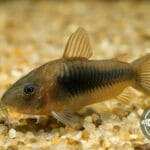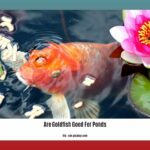Dive into the vibrant world of Christmas Wrasses! This comprehensive guide explores the different species, provides essential care tips for thriving reef tanks, and delves into their fascinating behaviors. Whether you’re a seasoned aquarist or just starting your saltwater journey, discover the secrets to creating a stunning underwater paradise featuring these festive fish.
Unveiling the Christmas Wrasse
The Christmas wrasse, a dazzling and engaging fish, is a beloved choice for reef aquarium enthusiasts. Their vibrant colors and captivating behaviors inject a splash of life into any tank. Before introducing these captivating creatures to your aquarium, let’s explore their unique characteristics and care requirements.
Species and Variations
The term “Christmas wrasse” generally refers to two primary species: Thalassoma trilobatum and Halichoeres claudia. T. trilobatum, the classic Christmas wrasse, exhibits a striking, almost Christmas-tree-like pattern of vibrant reds and greens. H. claudia displays similar hues, often more subdued, resembling a watercolor painting of a Christmas tree. Individual color variations within each species further enhance their unique charm. It’s important to correctly identify your Christmas wrasse species to ensure proper care. Misidentification is common, as the “Christmas wrasse” label is sometimes applied to fish simply possessing red and green scales or those found around the Christmas Islands. Halichoeres claudia is often considered the “true” Christmas wrasse.
Tank Requirements and Setup
Providing a comfortable living space is crucial for your Christmas wrasse. T. trilobatum requires a minimum tank size of 50 gallons, providing ample room to swim and explore. H. claudia can comfortably reside in a slightly smaller tank, around 30 gallons, though a larger tank is always preferable.
Maintaining optimal water conditions is paramount. Aim for a temperature between 72°F and 78°F and a specific gravity between 1.023 and 1.025. Regular water tests are essential for ensuring stability. Adequate filtration and circulation are also crucial to maintain a healthy environment. Consider incorporating live rock and a sandy substrate to mimic their natural habitat, providing hiding places and foraging opportunities.
Diet and Nutrition
Christmas wrasses are opportunistic omnivores with a preference for small invertebrates. Their natural diet consists primarily of bristle worms, amphipods, and small crustaceans. In a reef tank, they are effective pest controllers but may develop a taste for other ornamental invertebrates if their dietary needs aren’t adequately addressed. A balanced diet of live foods like mysis shrimp and brine shrimp, alongside high-quality prepared wrasse food, is key to keeping them healthy and vibrant. Feed your wrasses small amounts multiple times a day to mimic their natural grazing patterns.
Tank Mates: Creating a Harmonious Community
While generally peaceful, Christmas wrasses can exhibit territorial behavior, especially towards conspecifics. Avoid housing them with overly aggressive species or fish resembling them, which could lead to competition and stress. Suitable tank mates include peaceful reef fish such as clownfish, gobies, and certain damsels. Research carefully before introducing any new species to ensure compatibility.
Understanding Wrasse Behavior
Christmas wrasses exhibit fascinating behaviors, including color changes throughout their life cycle. Juveniles often sport unique patterns compared to adults. Remarkably, some species can change sex, typically from female to male, influenced by social cues.
Ethical Considerations: Supporting Sustainability
Prioritize sourcing captive-bred Christmas wrasses. This practice helps protect wild populations and the delicate balance of coral reef ecosystems. Supporting sustainable aquaculture contributes to the long-term health of our oceans.
Is a Christmas Wrasse Reef Safe?
Christmas wrasses, specifically Halichoeres claudia, are generally considered reef-safe and even beneficial. They primarily consume small invertebrates, including pests like bristle worms, amphipods, and the occasional unwanted snail, contributing to a healthy reef ecosystem.
Ensuring Reef Compatibility
To guarantee reef safety, confirm you’re acquiring Halichoeres claudia. Other species marketed as “Christmas wrasses” may have different temperaments and dietary preferences. Consult reputable sources and compare images for accurate identification.
Creating a Thriving Reef Environment
Christmas wrasses flourish in peaceful reef tanks. Provide a suitable environment with ample hiding places among the rocks and corals. Avoid aggressive tank mates that may cause stress or competition. Maintain pristine water quality through regular water changes and adequate filtration. It’s crucial to supplement their pest-control diet with appropriate wrasse formulas or frozen food options to ensure balanced nutrition and prevent them from targeting desirable invertebrates.
One is Enough: Maximizing Color and Minimizing Stress
Interestingly, Christmas wrasses exhibit their most vibrant colors when kept singly. Housing multiple individuals can trigger territorial behavior and diminish coloration. For optimal color vibrancy and a harmonious environment, keeping just one Christmas wrasse per tank is recommended.
Ongoing Research: Staying Informed
While current knowledge strongly suggests that Christmas wrasses are reef-safe, marine biology research continuously evolves. Staying updated on the latest findings is essential for responsible wrasse keeping.
What is the Lifespan of a Christmas Wrasse?
Christmas wrasses (Halichoeres claudia) typically live for 5-8 years in a well-maintained aquarium. With exceptional care, some individuals may even live for a decade or longer. Factors influencing their lifespan include diet, tank environment, and stress levels.
Factors Influencing Lifespan
Diet: A varied diet of live and prepared foods is essential. Insufficient nutrition can lead to the wrasse preying on desirable invertebrates in the reef tank.
Tank Environment and Size: Overcrowding and poor water quality can severely impact their health. While a 30-gallon tank might suffice, a larger tank (55 gallons or more) is preferable, particularly for T. trilobatum, to provide ample swimming space and maintain stable water parameters.
Stress: Minimize stress by avoiding aggressive tank mates and providing numerous hiding places. Stress can decrease a wrasse’s lifespan and lead to illness.
Species: While H. claudia is commonly referred to as the Christmas wrasse, other Halichoeres species may have slightly different lifespans. Accurate species identification is vital for providing the right care.
Disease: Like all aquarium inhabitants, Christmas wrasses are susceptible to various diseases. Early detection and treatment are essential for their survival. Quarantining new arrivals can prevent introducing infections into your main tank.
What is the Difference Between a Christmas Wrasse and a Surge Wrasse?
Distinguishing between Christmas wrasses and surge wrasses can be challenging, but certain key features help differentiate them.
Key Distinguishing Features
Snout Mark: Female Christmas wrasses have spotted heads and lack the “V” shaped mark characteristic of female surge wrasses. This “V” mark is a reliable distinguishing feature.
Head Coloration: Male Christmas wrasses and surge wrasses exhibit distinct head colors, though research is ongoing to fully define these variations. Male T. trilobatum develop a predominantly green head with intricate patterns, while male T. purpureum develop a bluish-green head with reddish-purple markings.
Body Coloration: Both species display some combination of red and green, but the specific shades and patterns differ. Adult Surge wrasses (T. purpureum) may exhibit two reddish stripes along their flanks against a bluish-green body.
Scientific Names : The Christmas wrasse (Thalassoma trilobatum) and the surge wrasse (Thalassoma purpureum) are distinct species.
Ongoing Research and Discovery
Our understanding of these vibrant fish continues to evolve. New research might reveal further subtle differences, so staying informed is always beneficial.
If you ever come across furry white caterpillars, it’s extremely important to keep your distance. And on the topic of insects, have you heard of abingdonii?
- Discover Long Black Pepper: Flavor & Health Benefits - April 25, 2025
- Shocking Twists: The Grownup Review: Unreliable Narration - April 25, 2025
- A Quiet Place Book vs Movie: A Deep Dive - April 25, 2025

















1 thought on “Christmas Wrasse: The Complete Guide to Care, Species, and Reef Tank Compatibility”
Comments are closed.